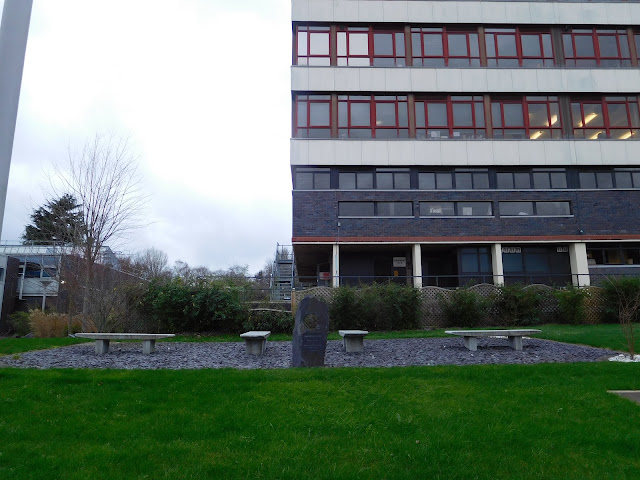X26/X27
Based on Royal Way, on the Belton Road West industrial estate, the Paul S Winson family-owned coach company was created in 1980, and has been running bus services in the area for most of that time.
Winson’s X26 service is a popular Monday through Saturday service that connects Loughborough to three nearby villages which fall within the Borough of Charnwood, namely, Quorn, Mountsorrel and Rothley. These villages lie in the Soar Valley and are on the west side of the River Soar: villages on the other side of the river include Barrow-upon-Soar, Sileby and Cossington. In addition to the X26 service, Winson’s also operate the X27 service which runs Monday through Friday, during the Leicestershire school terms only, and is dedicated to delivering children to school.
XPS and X-rays
Loughborough University has researched and taught all types of engineering since its inception as a Technical Institute in 1909. Chemistry and physics also feature on the curriculum, and today, the Loughborough Materials Characterisation Centre (LMCC) uses X-ray Photoelectron Spectroscopy (XPS), sometimes known as Electron Spectroscopy for Chemical Analysis (ESCA) to analyse the top 3-10 nanometres of a material. Using XPS it is possible to study thin films like those used to coat spectacles, corrosion like oxidation, and adhesion, as well as changes in the state and composition of a wide range of materials, from powders to solids, like metal, ceramics and manmade polymers.
X-rays were
discovered in 1895, and Loughborough College used the new techniques, which by
the end of the First World War could help inform about the condition of various
materials. The principal of the college, Herbert Schofield, had the foresight
to invest in X-ray equipment for the college in 1919, which was used to check
welds and castings. These early machines lasted until the 1930s when they were
replaced by new equipment. The university continues to benefit from all the
latest in X-ray technology, like the XPS.
____________________________________
This post is
one in a series of posts for the ‘April A-Z Blogging Challenge’
____________________________________
Posted by lynneaboutloughborough
With apologies for
typos which are all mine!
_______________________________________________
Thank you for reading this blog.
Copyright:
The copyright © of all content on this blog rests with me, however, you are welcome to quote passages from any of my posts, with appropriate credit. The correct citation for this looks as follows:
Dyer, Lynne (2024). X is for X26/27, XPS, and X-rays. Available from: https://lynneaboutloughborough.blogspot.com/2024/04/x-if-for-x2627-xps-and-x-rays.html [Accessed 27 April 2024]
Take down
policy:
I post no pictures that are not my own, unless I have express permission so to do. All text is my own, and not copied from any other information sources, printed or electronic, unless identified and credited as such. If you find I have posted something in contravention of these statements, or if there are photographs of you which you would prefer not to be here, please contact me at the address listed on the About Me page, and I will remove these.
External Links:
By including links to external sources I am not endorsing the websites, the authors, nor the information contained therein, and will not check back to update out-of-date links. Using these links to access external information is entirely the responsibility of the reader of the blog.
Blog
archive and tags:
If you are viewing this blog in mobile format, you will not be able to easily access the blog archive, or the clickable links to various topics. These can be accessed if you scroll to the bottom of the page, and click 'View Web Version'. Alternatively, there is also a complete list of posts, which when clicked will take you to the page you are interested in.
Searching
the blog:
You can search the blog using the dedicated search box that appears near the top of the blog when viewed in the web version. Alternatively, you can search using your usual search engine (e.g. Bing, Google, DuckDuckGo etc.) by following this example:
site: https://lynneaboutloughborough.blogspot.com/ “Radmoor House”
NOTE – the words you’re actually looking for must be in “” and the first of these must be preceded by a space
Thank you for reading this blog.
Lynne















